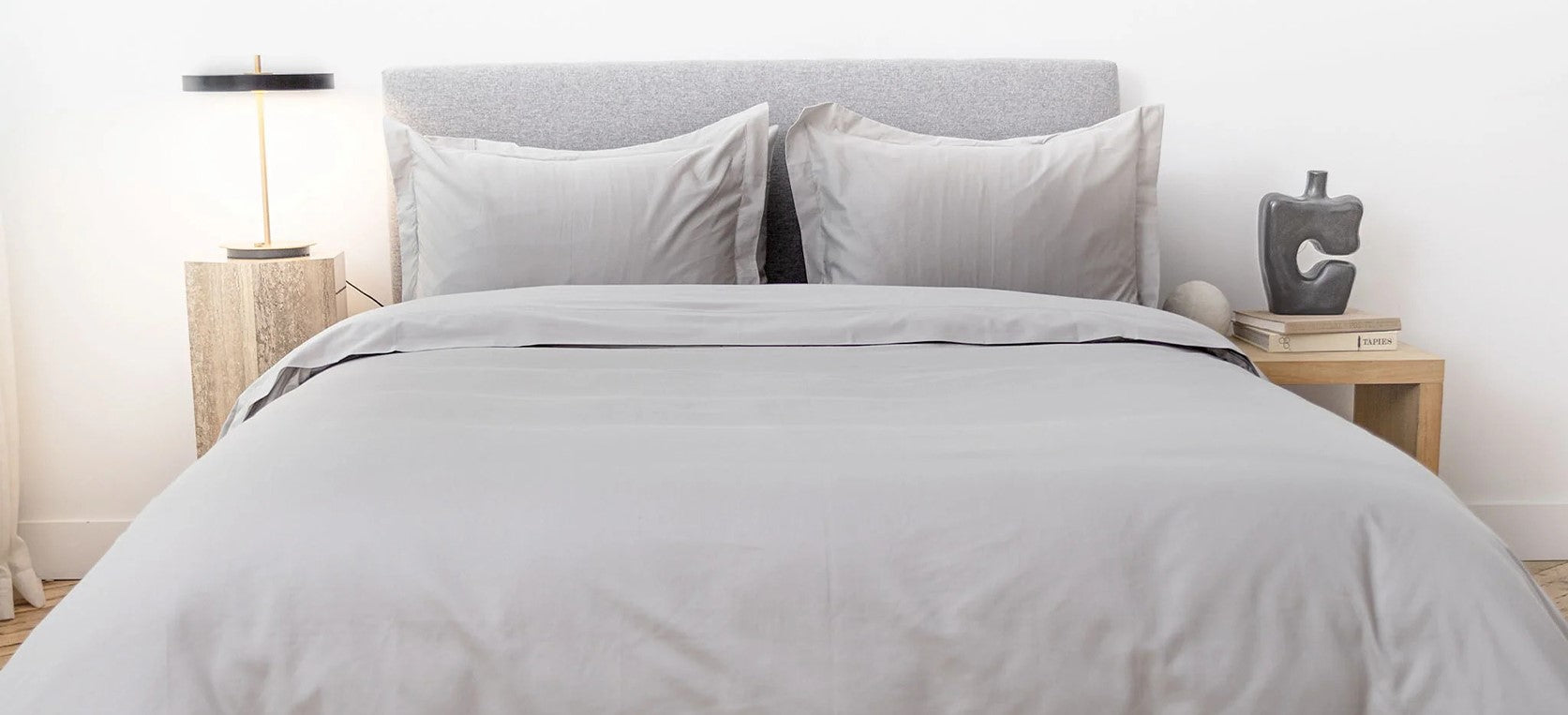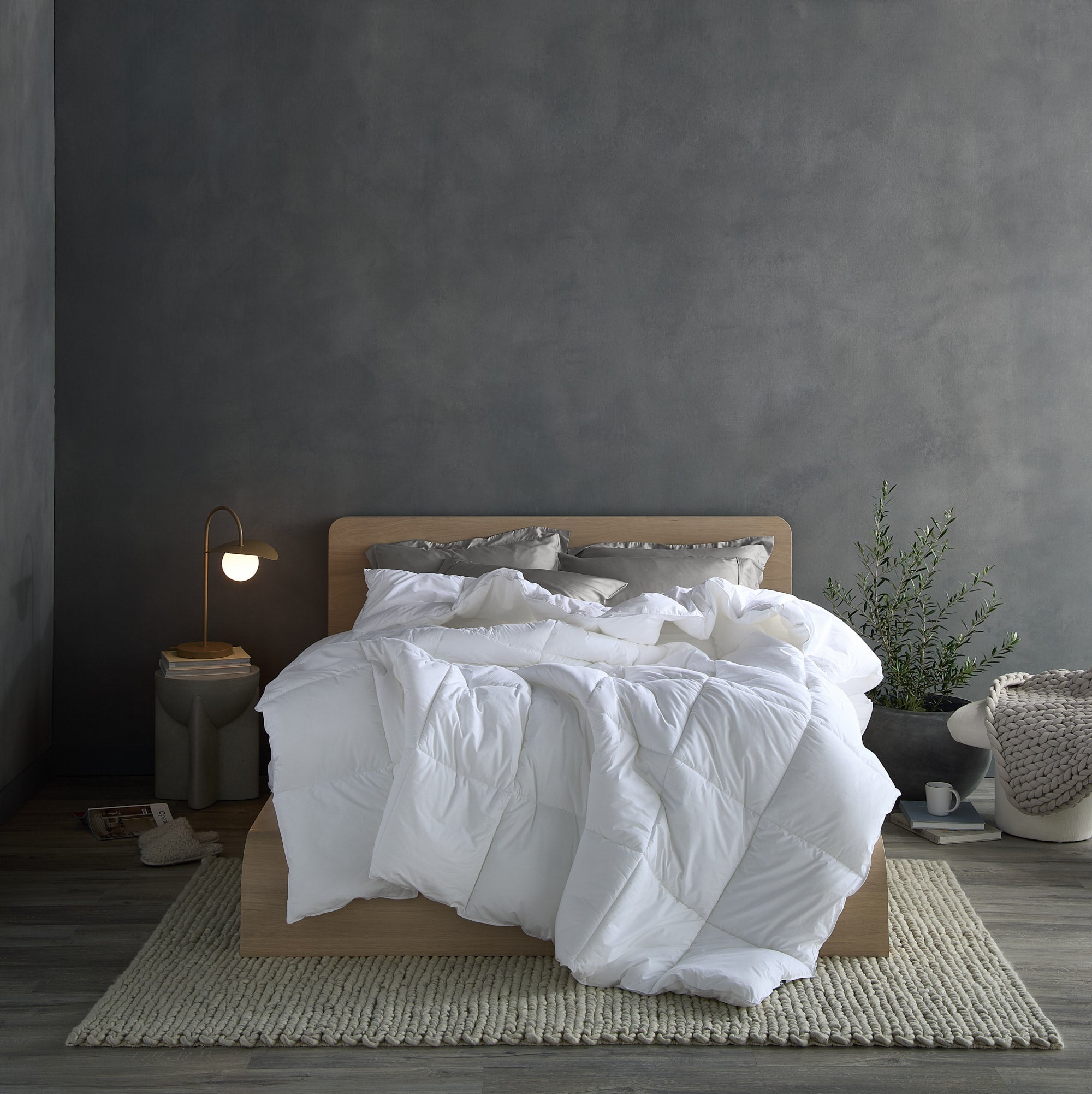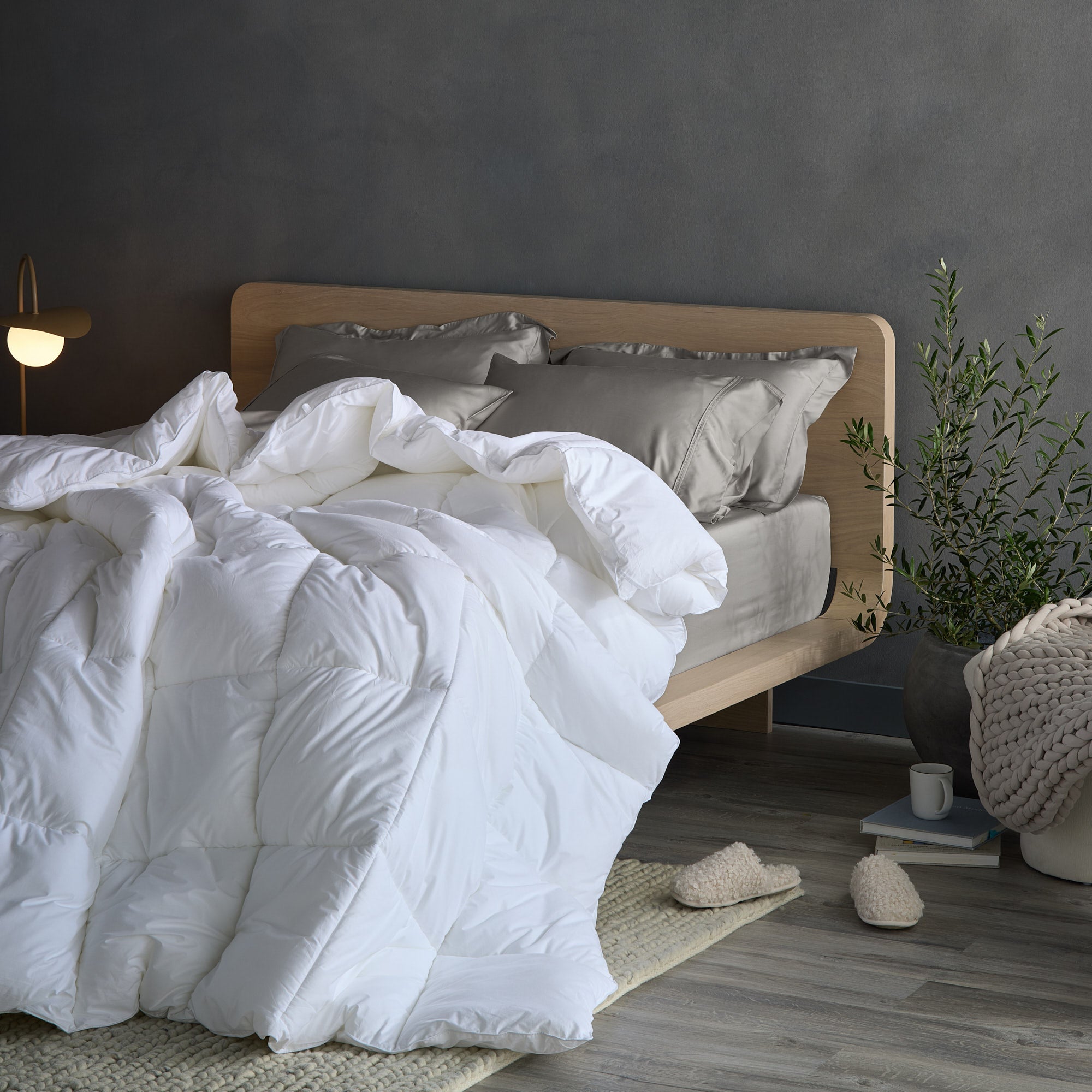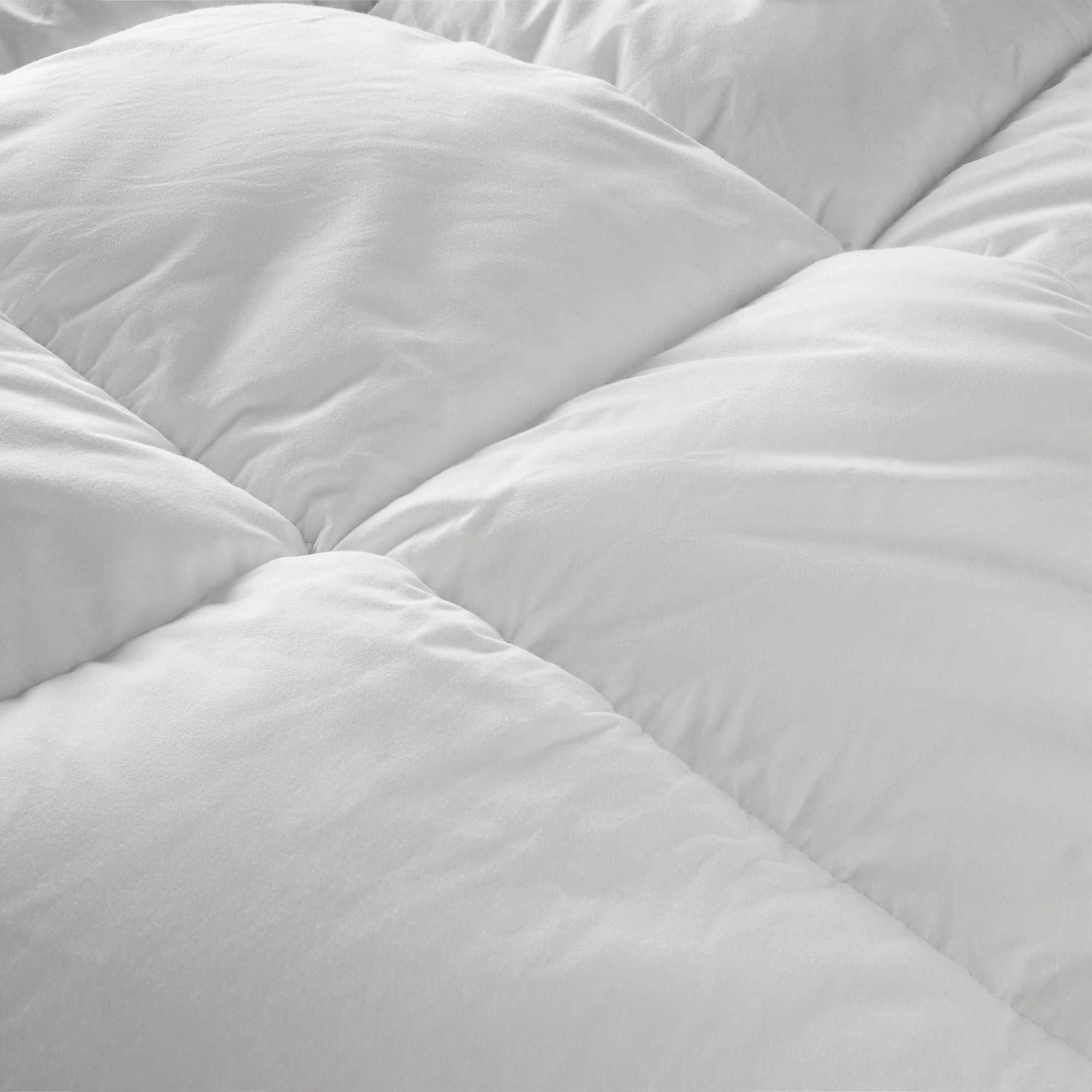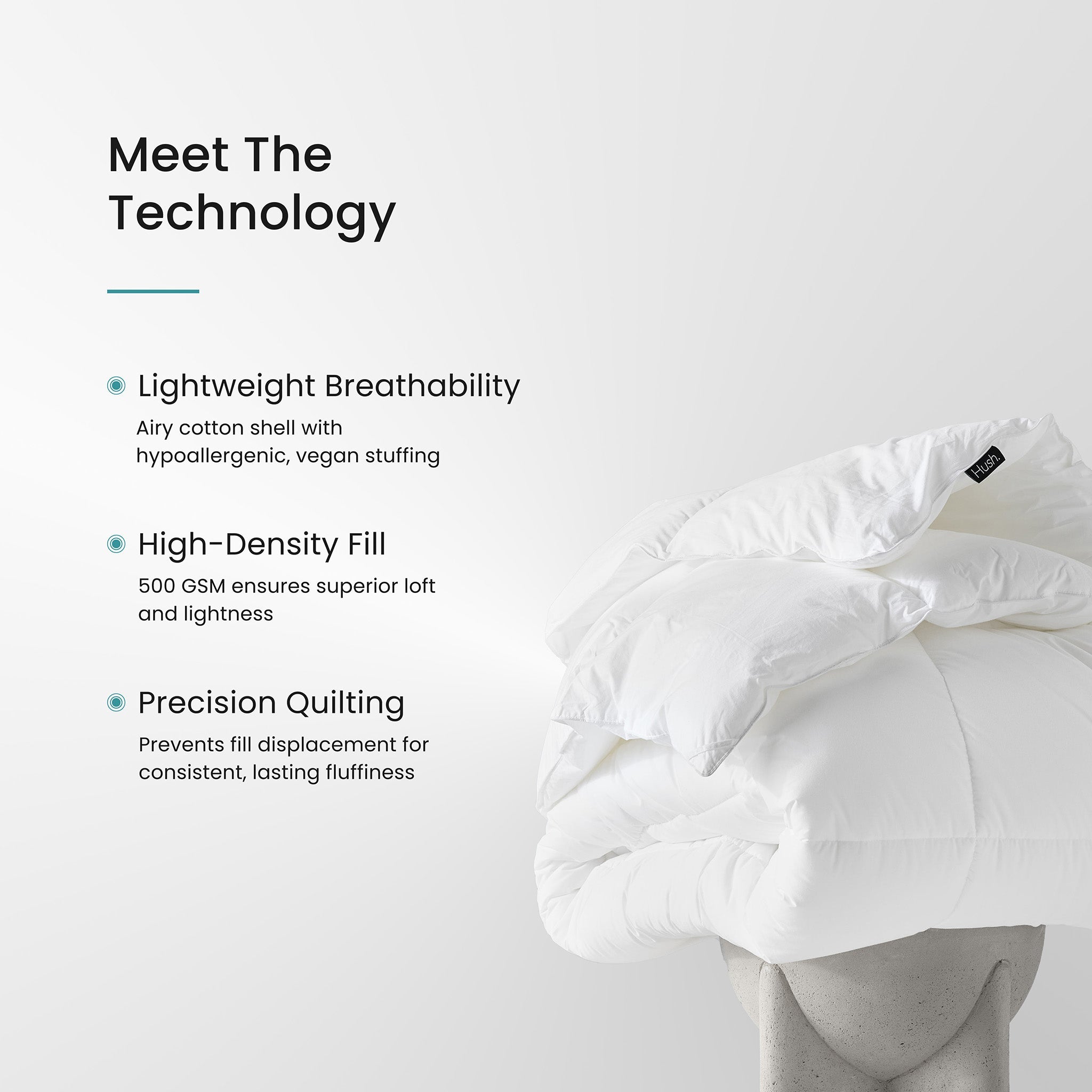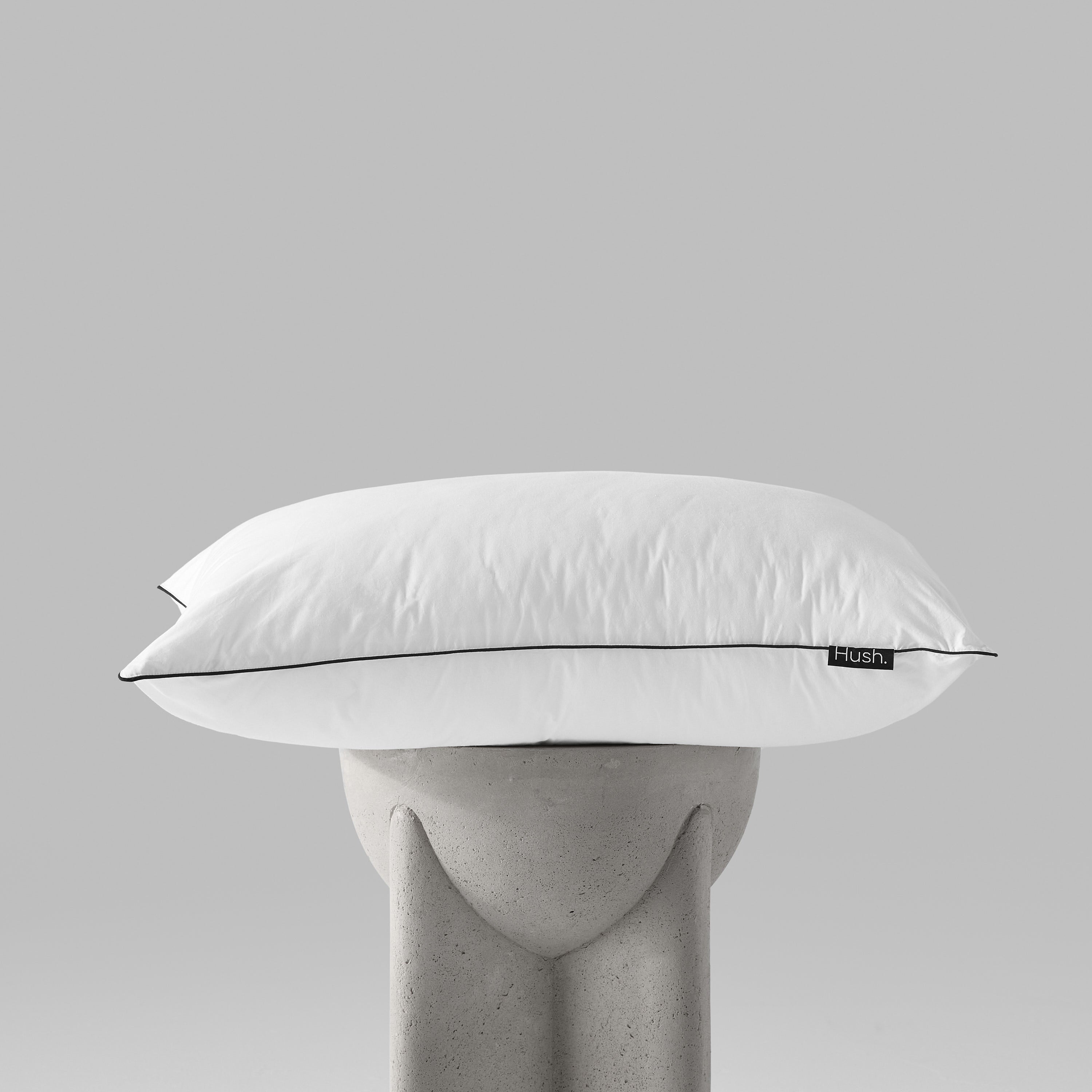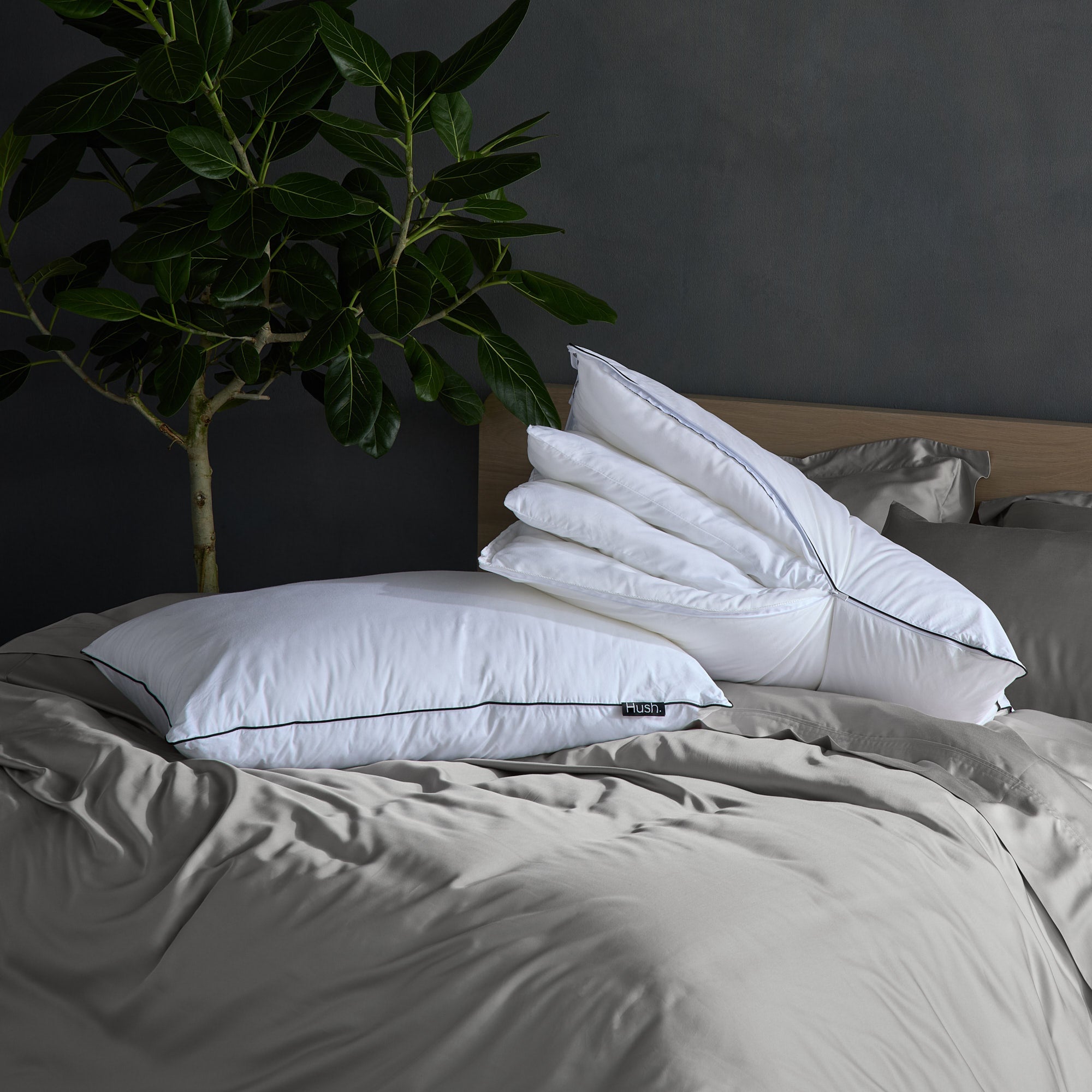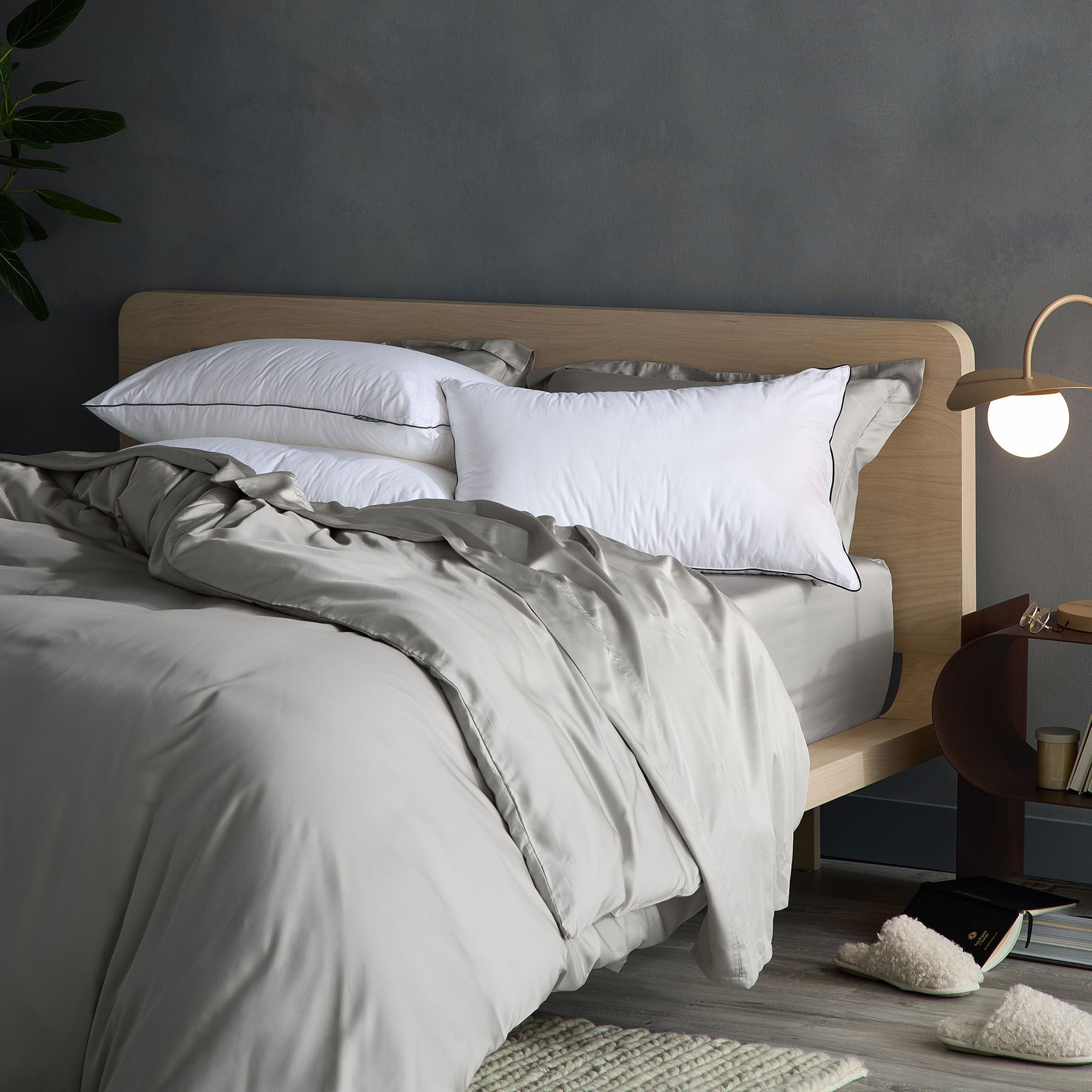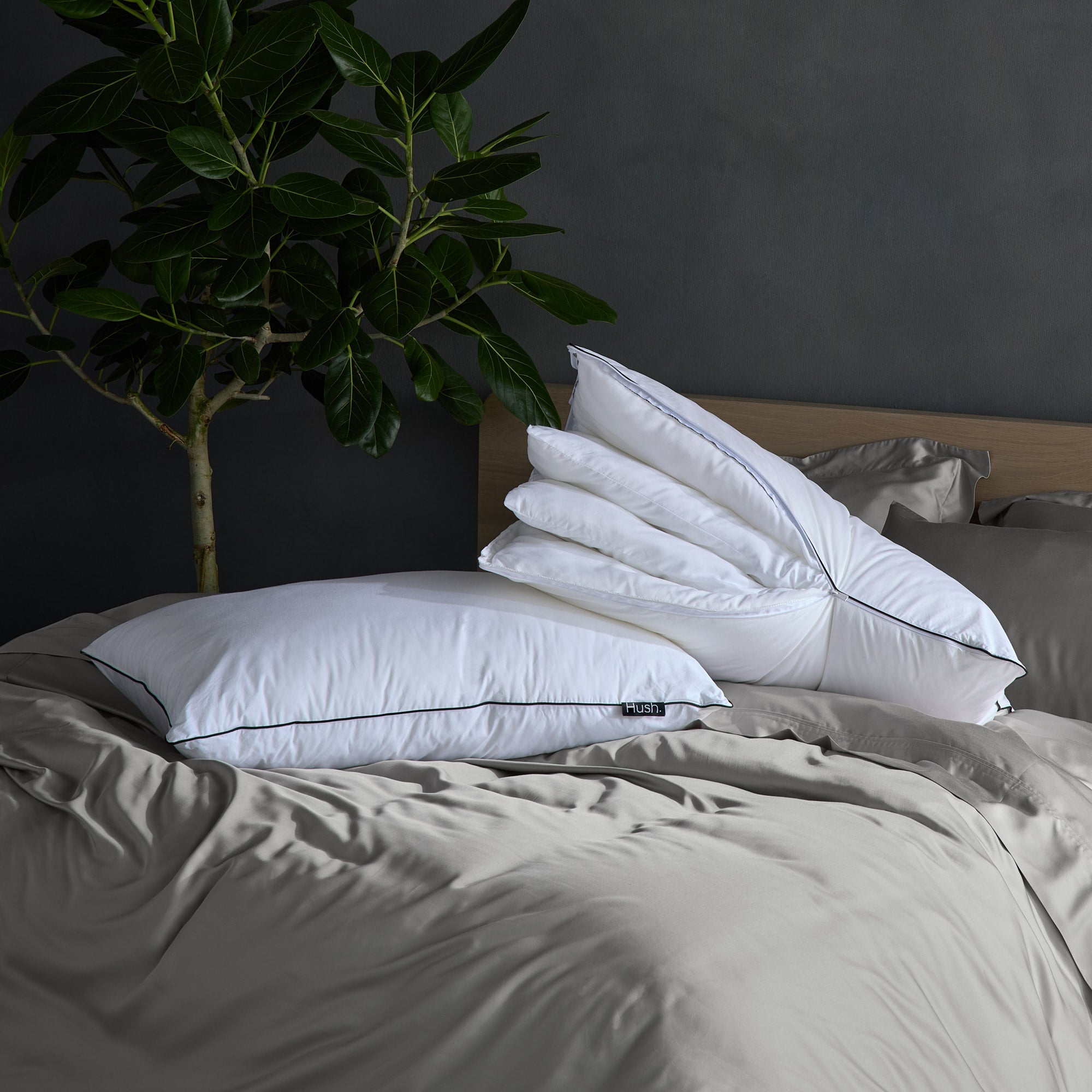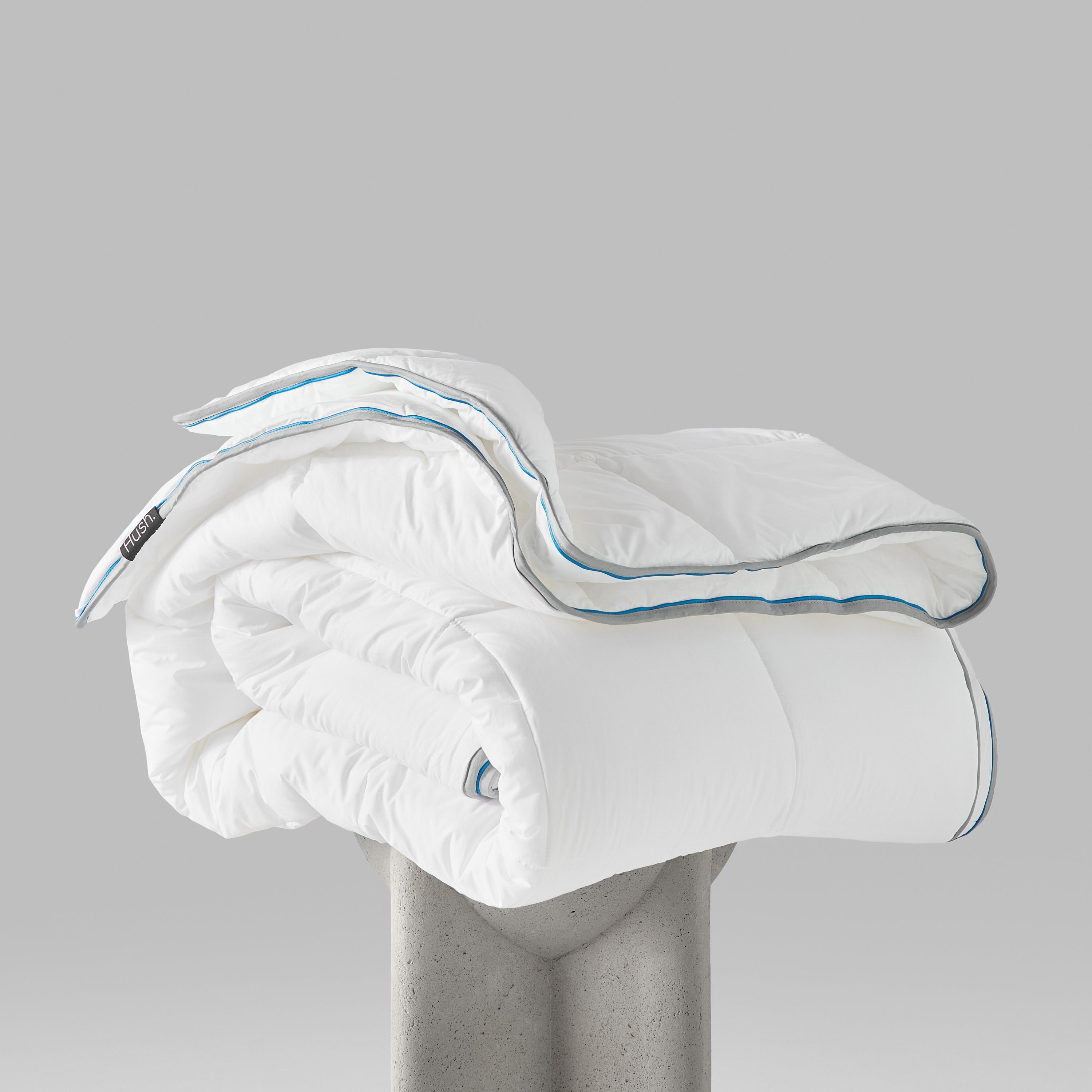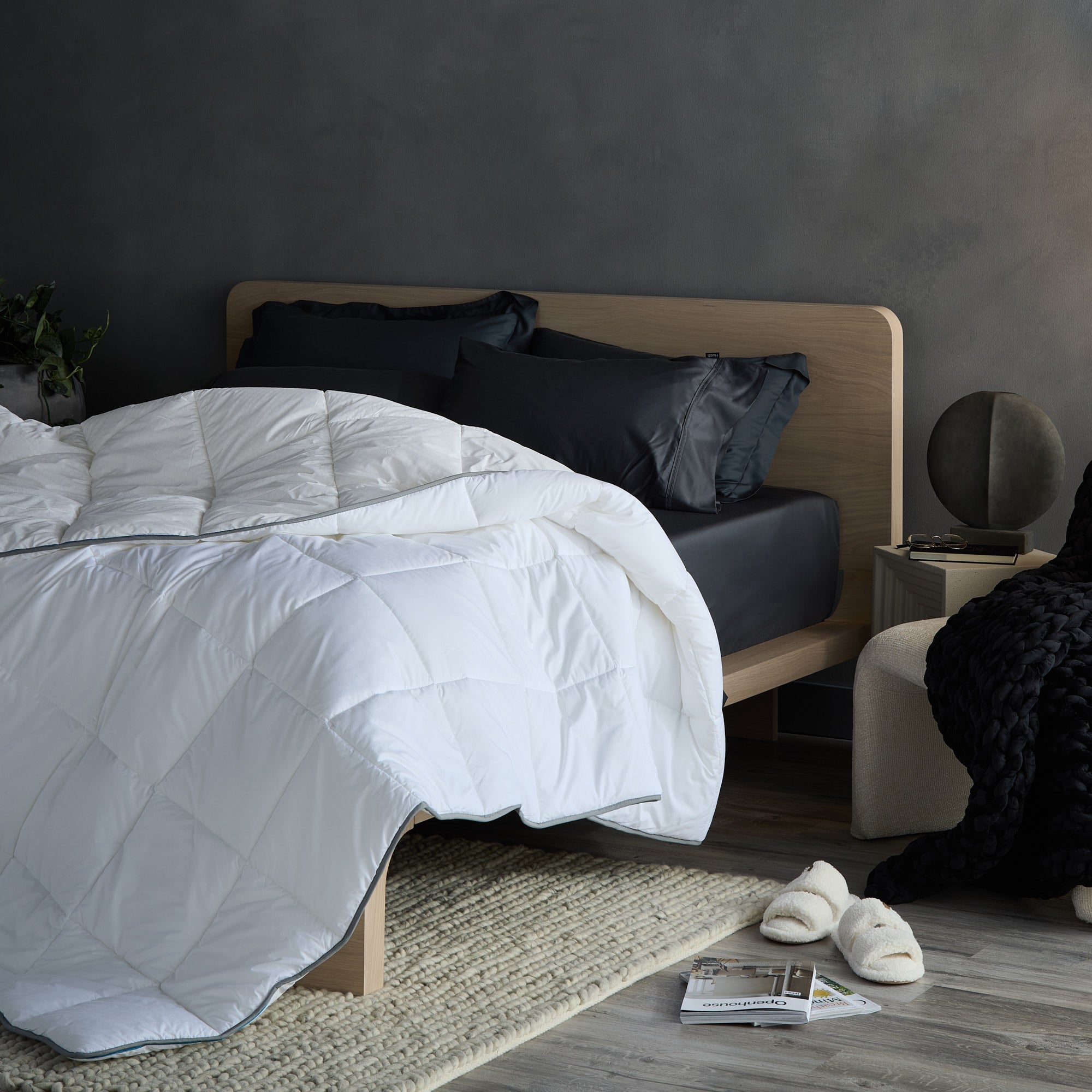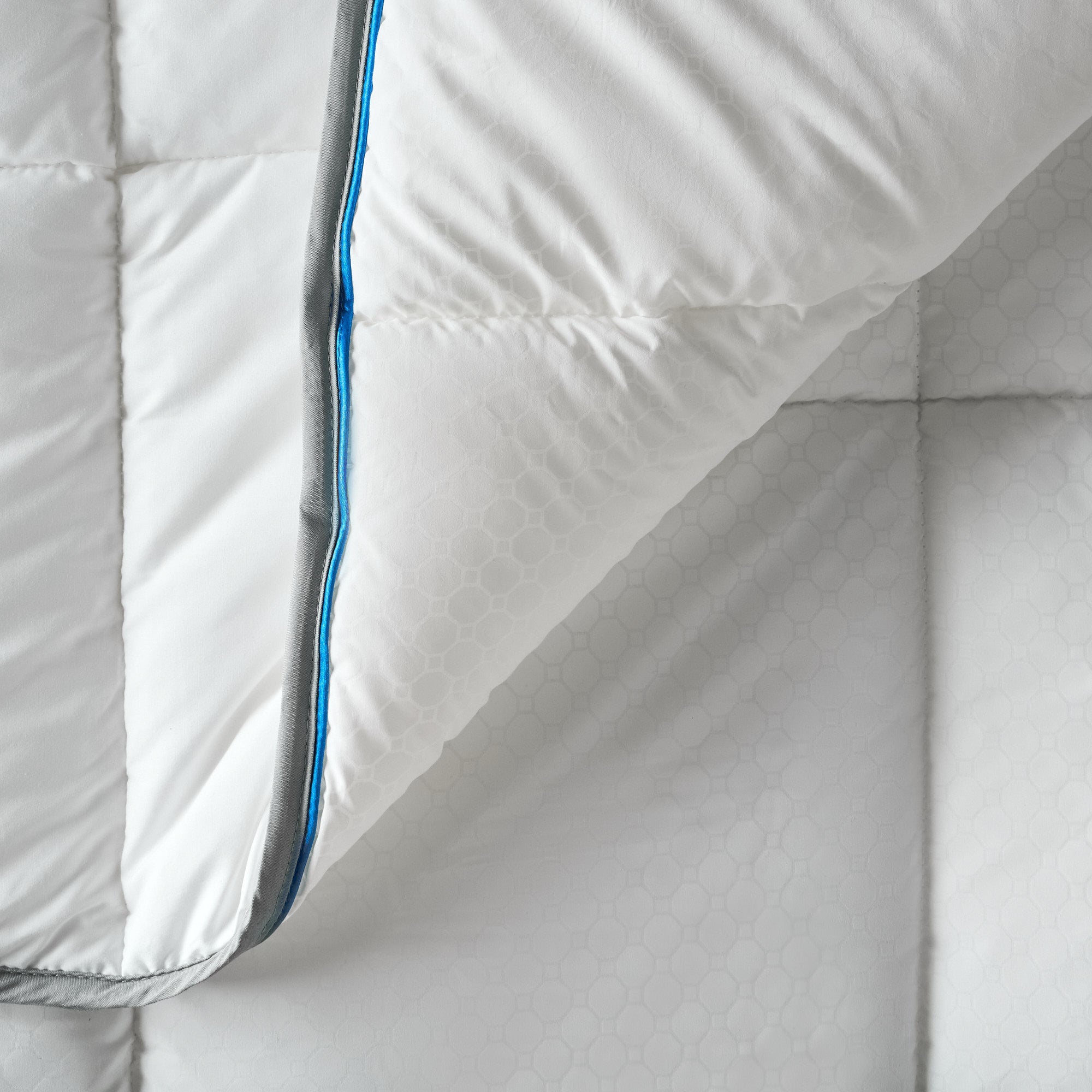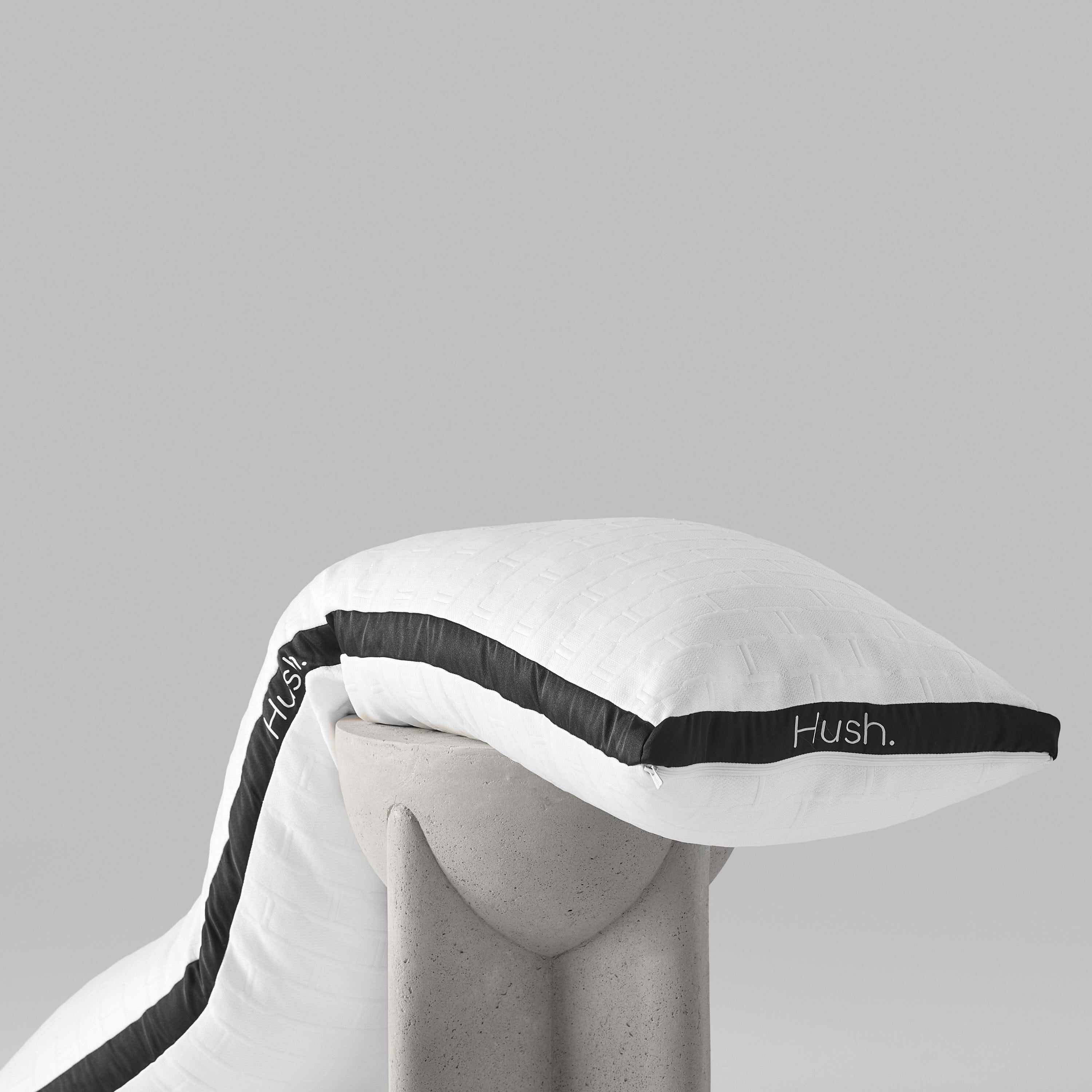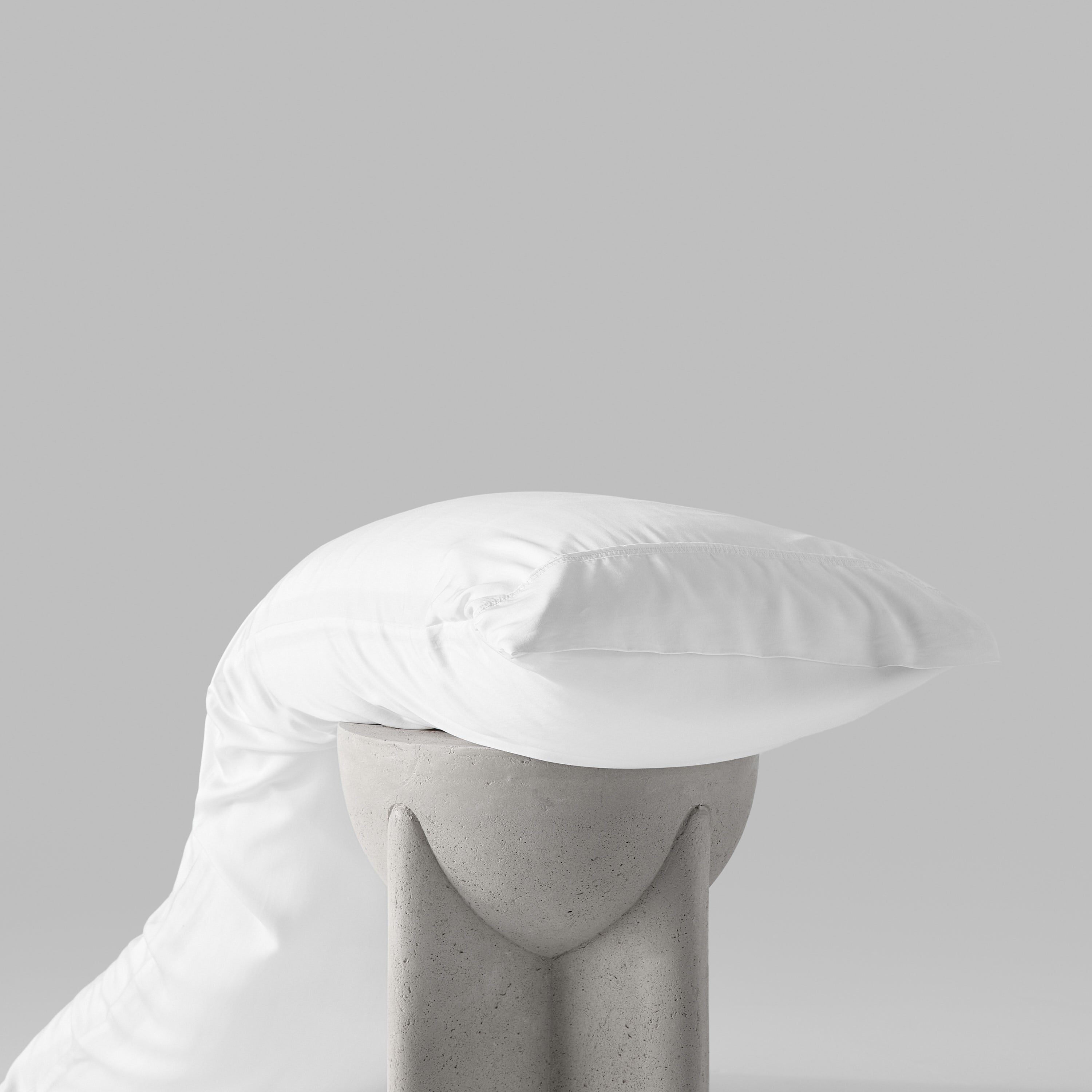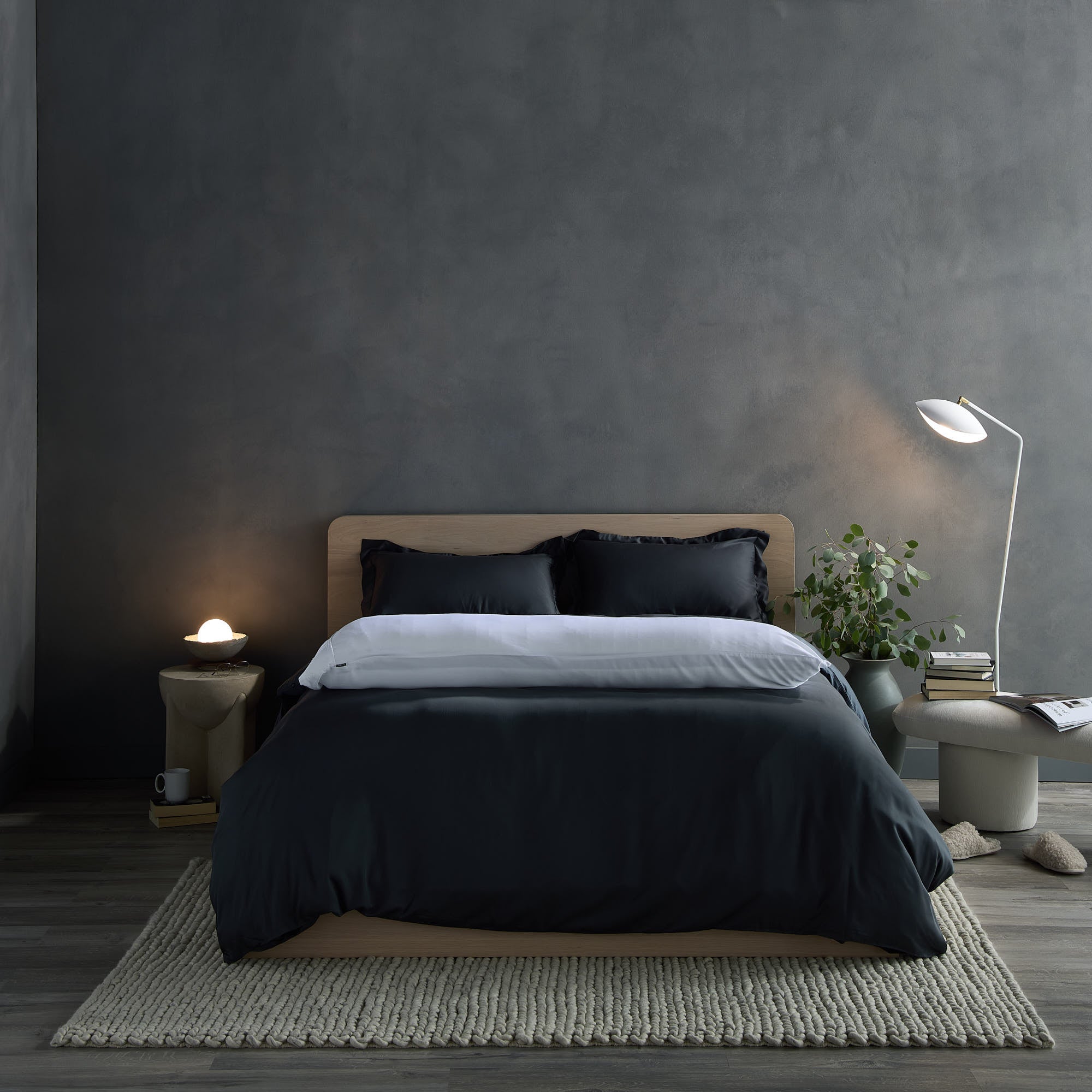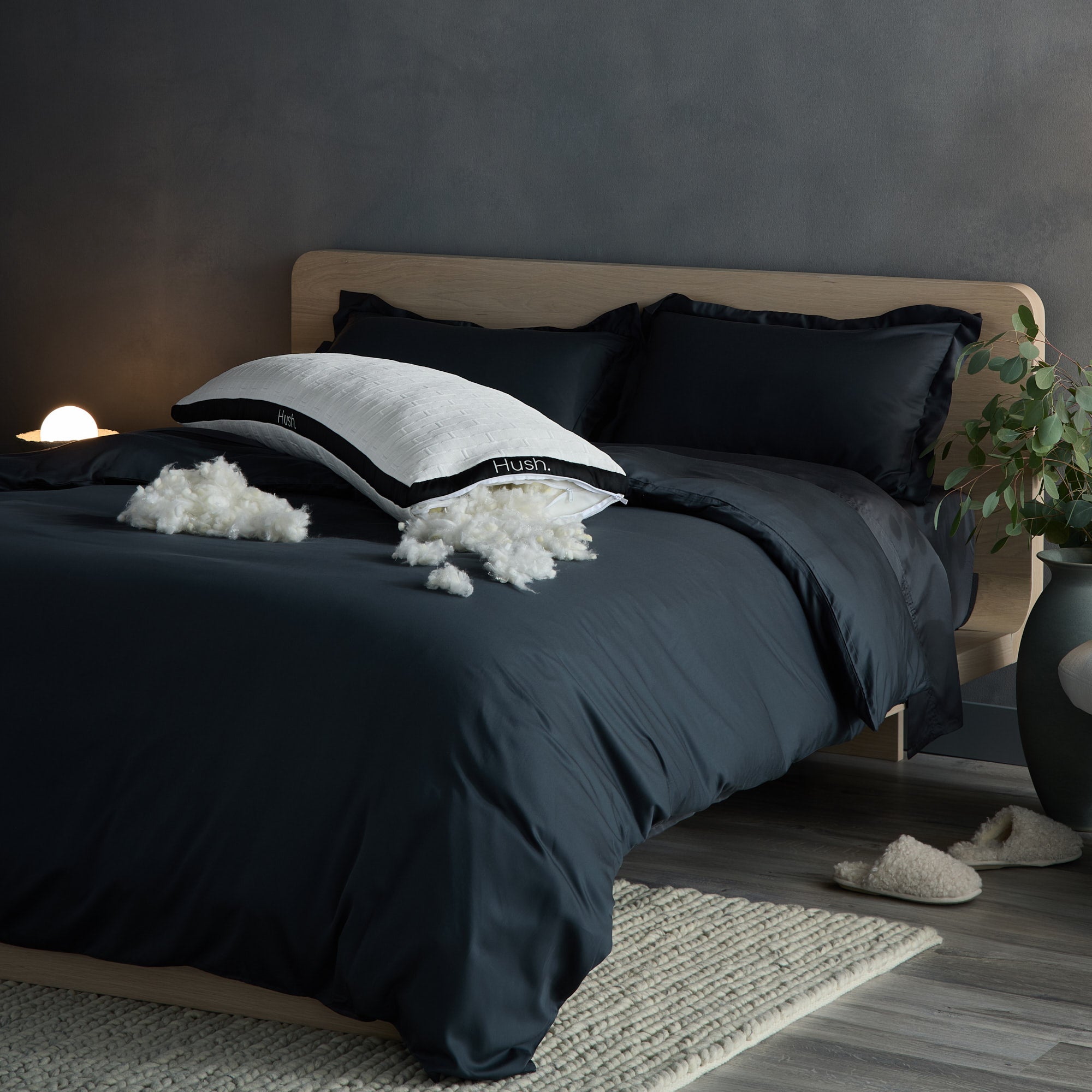If there’s one piece in your bed setup that can’t be imitated, it’s the duvet cover; warm, insulated, and perfect for huddling under on a cold night, your duvet is to your bed what butter is to bread. But where did the duvet come from, and where was it invented? Let’s unravel the story.
What is a Duvet?
At its core, a duvet is a type of bedding that is a soft, flat bag filled with down, feathers, or a synthetic alternative, and is typically protected with a removable cover, much like a pillow and its pillowcase. Known for its warmth and comfort, the duvet eliminates the need for layered pyjamas - instead, it provides a singular, fluffy layer that can be easily adjusted for seasonal needs.
And if you opt for a premium Hush duvet - and pair it with our ergonomic Hush queen duvet covers - you can enjoy even more benefits; from sweat-wicking to temperature control, our vegan duvets are eco-friendly, NASA-inspired and chemical-free.
When was the First Duvet Invented?
The origins of the duvet are a bit clouded, but it’s believed that the first duvets were made in China, but the first known usage traces back to rural Europe. While the exact date remains a mystery, historical accounts suggest that the people of the Viking Age (circa 793-1066 AD) in Northern Europe used duvets filled with the feathers of eider ducks. These birds, native to the colder regions of Europe, have down that is particularly insulating, making it a prized material for warmth.
The Chinese also have a long history of using quilted fabrics for warmth. These early quilts, while different in construction from the European duvet, share the same basic principle: trapping air with soft materials to provide insulation.
Evolution of the Duvet
Over the centuries, the duvet began its slow migration across Europe, and by the 16th and 17th centuries, this piece of bedding had become a standard feature in many affluent German households. German duvets were typically filled with a mix of feathers and down, both of which were touted for their health benefits.
Over in the UK, the duvet's popularity took off in the 1970s, largely credited to Sir Terence Conran, a British designer. He introduced and marketed them as a hassle-free bedding option, setting the stage for the duvet's ubiquity in modern European households.
As for North America, the duvet took a slightly different form. While the core concept remained the same, it was often termed as a 'continental quilt' or more popularly, a 'comforter'. Over the years, however, as global cultures intermingled and bedding preferences evolved, the traditional European duvet found its place in North American homes.
Duvet vs. Comforter: What’s the Difference?
So, what about the duvet vs comforter debate? Though used interchangeably in many contexts, duvets and comforters possess distinct differences: a duvet is designed to be a singular bedding piece that fits snugly within a duvet cover, making it easily washable and customizable in terms of design. Comforters, on the other hand, are often used with a set of coordinating bed linens and are typically a one-piece bedding item that combines both the filling and the decorative outer layer.
Benefits of a Duvet
So, were the ancient Vikings and Norwegians onto something? Here are just a few reasons why duvets make for the perfect addition to your bed set-up, no matter where you are in the world:
Versatility
One of the most significant advantages of a duvet is its adaptability to different seasons; you can easily swap out a heavier insert for a lighter tog as the weather warms, ensuring comfort and temperature-appropriate sleep year-round.
Easy Maintenance
With a duvet cover protecting the main insert, you only need to wash the cover most of the time; this not only makes laundry day more manageable but also extends the life of the duvet insert. Plus, did you know that a well-maintained duvet can last for up to 10 years?
Aesthetics
Aside from being comfortable, cozy, and warm, a duvet also brings an aesthetic dimension to any space; with different designs, colours, and fabrics to choose from, you can frequently update your bedroom's look without investing in an entirely new bedding set.
Enhanced Comfort
Finally, we couldn’t list the benefits of duvets without mentioning the comfort factor: as anyone with a duvet already knows, the fluffy and airy nature of duvets provides a cloud-like sleeping experience that simply can’t be imitated. And while blankets and quilts might offer adequate coverage during the summer, nothing can compare to the comfort of a warm duvet during the winter months. Just ask the Vikings!
FAQs
How often should I replace my duvet?
While duvets can last many years with proper care, it's advisable to replace them every 5 to 10 years, depending on the material and usage.
Can I use a duvet without a cover?
While possible, it's not recommended. A cover protects the duvet from dirt, spills, and regular wear and tear, extending its lifespan.
What's the difference between down and synthetic fillings in duvets?
Down fillings come from the fluffy undercoating of ducks and geese, which are lightweight and offer excellent insulation. Synthetic fillings, on the other hand, are made from polyester and are hypoallergenic, making them suitable for those with allergies.
How can I ensure the longevity of my duvet?
Regularly fluffing your duvet keeps it in shape, but you should also make sure to protect it with a duvet cover and ensure it's cleaned according to its care instructions.
